#and we all know which adam is which in that statment
Explore tagged Tumblr posts
Text
Fine Art Photography: What It is and How to Do It

What is fine art photography? How to create fine art photography? Who buys fine art photography? What is considered fine art photography? These are all common questions that people have about the fine art photography space.
One might wonder why it’s important to understand what fine art photography is.
As photography has become more accessible to more people - which is a good thing - more and more people are calling themselves fine art photographers, even if they aren’t - which is a bad thing.
That being the case, it’s necessary for us all to know what makes fine art photography and how it’s different from normal photo-taking.
What is Fine Art Photography?

To be honest, answering the question, “what is fine art photography?” is a lot more difficult than one might think. After all, fine art photography is art, and art is subjective, so how can we define it?
It covers a lot of ground, too, from fine art nude photography to the popular Disney fine art photography to fine art wedding photography and fine art portrait photography. The spectrum it covers is quite vast, so, again, that makes it hard to define it.
But, if we’re in a situation in which our lives depend on a fine art photography definition, here you go:
Fine art photography is about the artist and their interpretation of the scene. The camera is merely a tool to create art - it’s not about what the camera sees, but is instead about what the artist wants to make of the scene.
In other words, where a photojournalist uses their camera to record an accurate representation of their subject, a fine art photographer isn’t necessarily interested in portraying the subject with any accuracy whatsoever.
Instead, a fine art photographer’s camera is used to create art - a piece that expresses the artist's unique vision and aesthetic.
Ansel Adams perhaps said it best when he said, “Art implies control of reality, for reality itself possesses no sense of the aesthetic. Photography becomes art when certain controls are applied.”
So, fine art photography is more about a photographer’s feelings and vision for a subject than the literal representation of that subject.
Fine Art Photography Ideas
Now that we have a working definition of fine art photography, let’s explore some of the underlying ideas that make a photograph fine art.
The Photographer’s Purpose

Fine art is all about the photographer’s purpose - the central emotion, feeling, idea, or message they want to convey with their image.
The purpose of the photo can be virtually anything, from a small concept like “alone in the dark” to a broad-based idea like “what freedom means.”
Think of the photographer’s purpose as a hypothesis - it’s the starting point of their experimentation with their camera.
The Photographer’s Techniques

Fine art photography does not have to stand in isolation. That is, fine art pieces are often part of a series.
To create a cohesive series, you need both a central purpose and common techniques. This might mean you utilize long exposures in each photograph, convert each one to black and white, or incorporate certain elements (i.e., the color red, a windmill, or human forms) into each photo. You might also use the same medium (i.e., printing on canvas) to give the collection consistency.
The Photographer’s Artist's statement

Often, fine art photography needs to have an artist's statment from the photographer, that way their purpose is clear to the audience.
This artist's statment needn’t be a novel - just a short statement of what the photo is of, how you made it, and the purpose behind it - so viewers have a better understanding of your perspective and intentions with the photograph.
Common Types of Fine Art Photography
The ideas noted above can be applied in a wide range of photographic pursuits. Let’s look at a few of the most common types of fine art photography.
Black and White Fine Art Photography
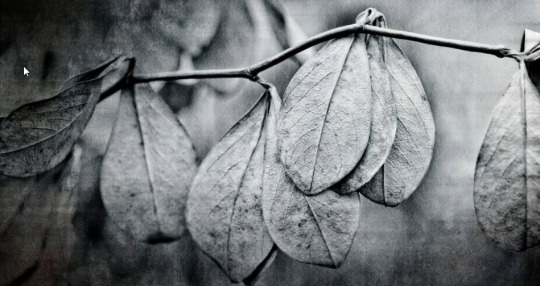
Perhaps more than any other kind of fine art photography, black and white fine art photography is all about focusing on an emotion, portraying it effectively, and evoking that emotion in the viewer.
To do so, you have to strive to find ways to express that emotion in ways that go beyond color - if the emotion you wish to convey is love, don’t rely on using red; instead, consider ways that you can provoke that emotion in the absence of color.
Symbolism is often used in black and white photography to accomplish this.
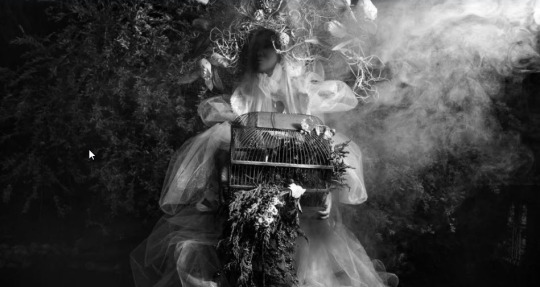
In the image above, the frantic feeling one gets by inspecting this image is achieved by using light and dark as symbols of good and evil, pulling the girl in two opposing directions.
Use contrast, textures, patterns, and shapes to create interest in your shot in the absence of color. Doing so often present opportunities for expressing two diametrically opposed feelings as well, and that conflict is a fantastic subject for black and white photos.
FINE ART NUDE PHOTOGRAPHY

The human form has long been a subject of artists, and photographers are no different.
What sets fine art nude photography apart is that isn’t simply about the model being nude or even being sensual. Instead, it’s about exploring the shapes and features of the body and demonstrating their true beauty.
What’s more, this type of fine art photography is an excellent vehicle for exploring one’s inner feelings. Whether those feelings are good, bad, or otherwise, nude fine art photography literally provides a stripped down canvas upon which you can express your purpose, thoughts, and feelings in any way you wish.
Fine Art Landscape Photography

I’m a big landscape guy, so fine art landscape photography is certainly my bread and butter.
To take a normal landscape photo to the realm of fine art, you really have to focus on telling a story with the image. That is, dive deeper than what is merely seen with the lens and discover ways to build a story around what you capture with your lens.
One way of doing this is to show viewers something totally unexpected.
When one mentions “landscape photography,” the images conjured up in people’s heads are often of vast landscapes like those photographed by Ansel Adams. And if that’s what they expect, why not do the opposite?
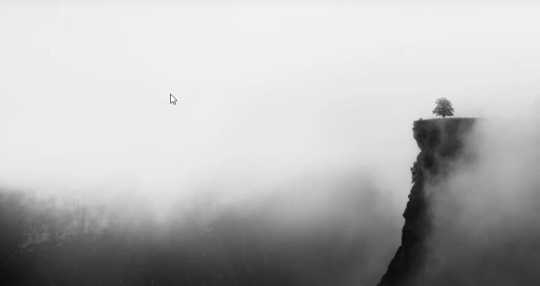
Focus on the details of the landscape. Create a macro shot. Get your telephoto lens out and frame up a shot that highlights just one or two elements of the larger landscape.
What’s more, add elements like people or man-made objects. Doing so often helps facilitate storytelling, and it’s not something you typically see in many landscape photos.
The combination of the story and the unexpected elements can help you create fine art landscape photography with quite a visual punch.
How to Create Fine Art Photography
There are a few steps you need to take if you’re going to find success in creating photographs that are considered fine art.
How to Create Fine Art Photos: Get Your Ideas Together
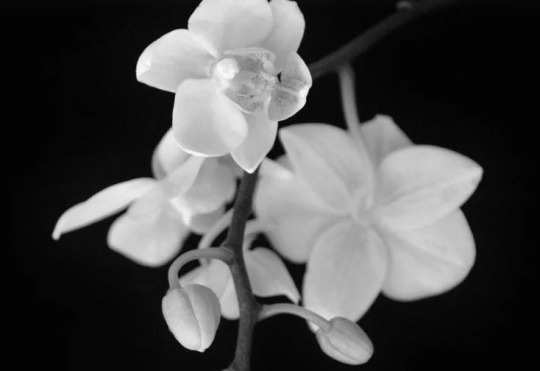
I’m a sticky note kind of guy, so it makes sense for me to brainstorm ideas for a fine art photograph by using sticky notes. You can use whatever medium you want, but the important idea here is to simply get your thoughts out there in a way you can see them.
In particular, focus on considering the following:
The topic of the photo. This should be something about which you have a lot of passion!
The techniques you’ll use. Whether it’s macro, long exposure, or something in between, figure out the photography techniques required to fulfill your vision.
The message you wish to convey. The message is as important as the topic of the photo. It’s the feeling or emotion you want people to walk away with, so you need to nail that down before you press the shutter button a single time.
How to Create Fine Art Photos: Bring Your Ideas to Life
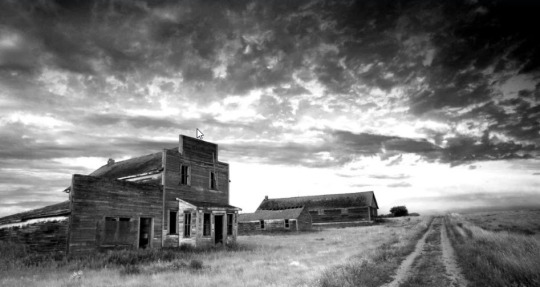
So, if I wanted to create a fine art photo, my topic might be “abandoned” using black and white conversion as a central technique.
When I think of abandoned, I think about things that are vast, empty, and perhaps downtrodden, much like the little ghost town in the photo above.
This image clearly conveys those ideas or messages. The manner in which the image is framed gives us plenty of details to inspect in the abandoned buildings, but the wide-angle view also gives us some indication of the surrounding landscape, which is both vast and empty.
How to Create Fine Art Photos: Remember It’s About Your Vision

Remember, fine art photography is all about you and your interpretation of a scene. That means there are no right or wrong answers here!
Whether you’re into fine art landscape photography or fine art black and white photography or you want to create fine art photography prints or your fine art photography is just for you, bear in mind that the images you produce are really for you and you alone. What the viewer does with your photos is up to them.
Fine Art Photography: Final Thoughts
As we’ve explored in this article, fine art photography is quite a different animal than normal photography.
This work is about you, your vision, and your technique. This type of photography is not about getting likes or shares on social media - it’s about your expression of your ideas. If people like it, great. If not, too bad for them!
Remember that this is a process and that you need to focus on more than simply what’s in front of your camera.
Define your vision, create a clear message, and convey that through your photos and your photographer’s statement. If you can do those things, you might need to learn how to make fine art photography prints and how to sell fine art photography online, because you’ll have gorgeous photos that should be shared with the world.
#studioserraphotography#real estate photography#commercial photography#commercial real estate photography#commercial photography service#photo studio san diego#photography studio san diego#fine art photography#portrait fine art photography#landscape photography#scenic photography#seascape photography#professional landscape#beachscape photography
0 notes
Text
Journal 5
This past has been all about rape culture, discussions in class, we also watched a documentry about sexual violence on campus, the hunting ground. This journal will focus on rape culture mainly on college campuses, so we will be discussing sexual violence and what happens after you report on college campuses. In Armstrong’s 2006 article, Armstrong describes sexual assault on college campuses as "a predictable outcome of a synergistic intersection of processes operating at individual, organizational and interactional levels" and describes these processes as both explicitly gendered and gender neutral, she then goes on to state on the opening page ‘college women “are at greater risk for rape and other forms of sexual assault than women in the general population or in a comparable age group” and “least half and perhaps as many as three-quarters of the sexual assaults that occur on college campuses involve alcohol consumption on the part of the victim, the perpetrator, or both (Abbey et al. 1996; Sampson 2002). The tight link between alcohol and sexual assault suggests that many sexual assaults that occur on college campuses are “party rapes.” (pg 483) I agree with all of her statements, but one thing is alcohol doesn’t create a Rapist. Strongly, I agree with Armstrong’s argument regarding how sexual assault on college campuses necessitates action on institutional, interpersonal, and individual levels, to do more that simply focusing on preventative education measures geared towards women. And not towards men, we teach girls how to protect themsleves, how not to get raped pretty much. But we do not teach boys not to rape. When it comes to college, its so many young adults on their own for the first time, mixed with the oppiste sex, aclohol, drugs and in general learning how to take care of yourself. Going back to how Armstrong describes sexual assault on college campuses as "a predictable outcome of a synergistic intersection of processes operating at individual, organizational and interactional levels" and describes these processes as both explicitly gendered and gender neutral. I agree with what shes saying, and especially with the predictable outcome part of her statment. “ “Why do colleges and universities remain dangerous places for women in spite of active efforts to prevent sexual assault? While some argue that “we know what the problems are and we know how to change them” (Adams-Curtis and Forbes 2004:115), it is our conten- tion that we do not have a complete explanation of the problem. To address this issue we use data from a study of college life at a large midwestern university and draw on theoretical developments in the sociology of gender (Connell 1987, 1995; Lorber 1994; Martin 2004; Risman 1998, 2004).” (pg 484) Going off from that, it os no sercet that sexual assult is a problem on college campuses but why has there been no effort for it to be fixed by the institutional level. I agree that this predictable outcome is given a uneducated landscape by the colleges of gender and sexuality, plus sexual health policies. I feel as though in theses cases it is very gendered rather than gender neutral. “illustrate that gender inequality is institutional- ized on campus by “formal structure” that supports and intensifies an already “high-pressure heterosexual peer group” (p. 180). This perspective grounds sexual assault in organizations that provide opportunities and resources.”(pg 485) I think most if not almost all are processed gendered. “Student characteristics shape not only individual participation in dangerous party scenes and sexual risk within them but the development of these party scenes.5 We identify individ- ual characteristics (other than gender) that generate interest in college partying and discuss the ways in which gendered sexual agendas generate a peer culture characterized by high- stakes competition over erotic status.” (pg 487) Something that I have noticed in general soceity is we tend to blame the party sence, and alcholol, but the real blame is on the perpetrator, in most cases because in both parties if you are the same amount of under the influence than in thoses cases it might get tricky.
0 notes